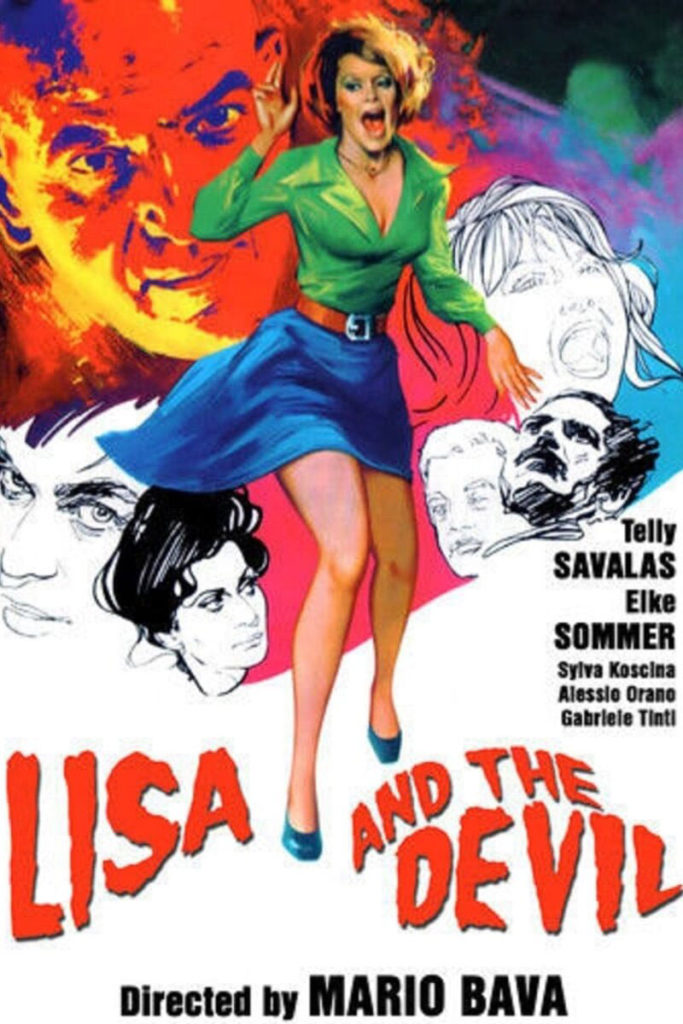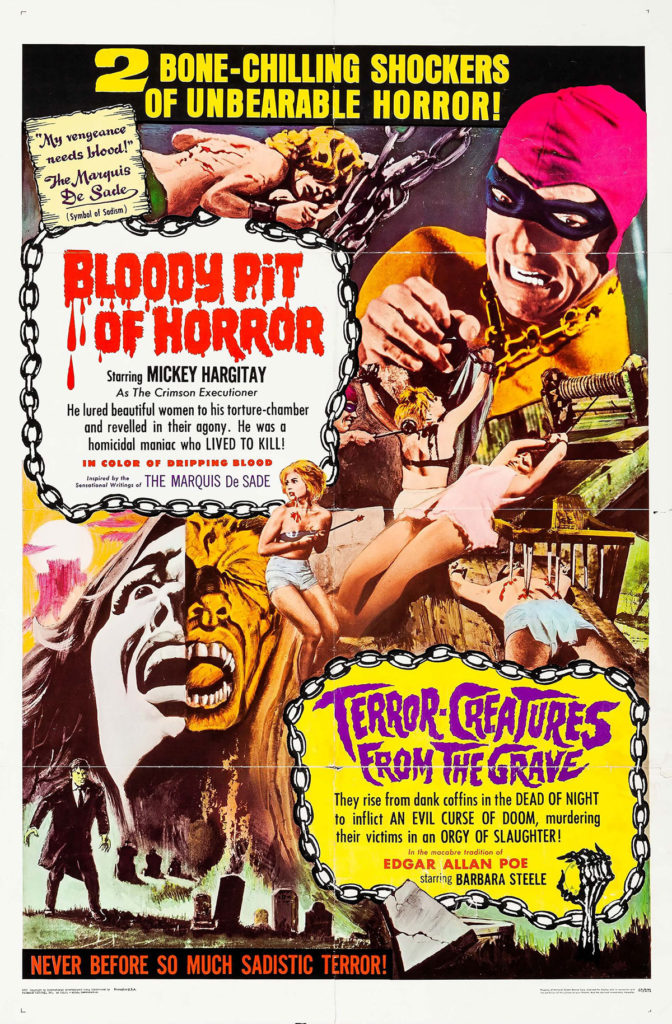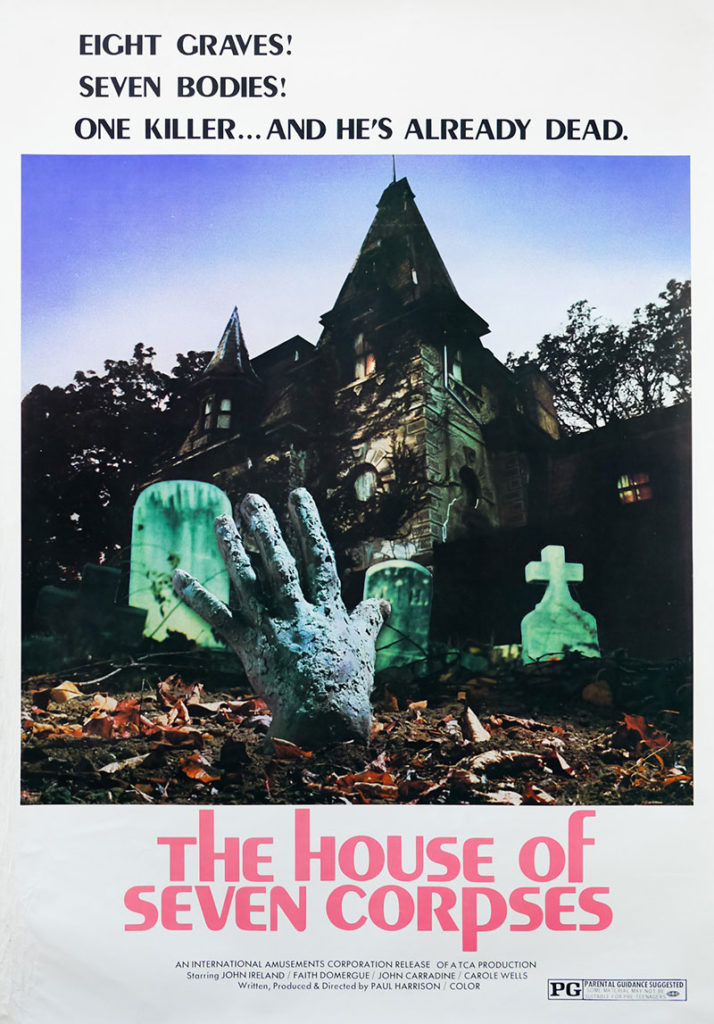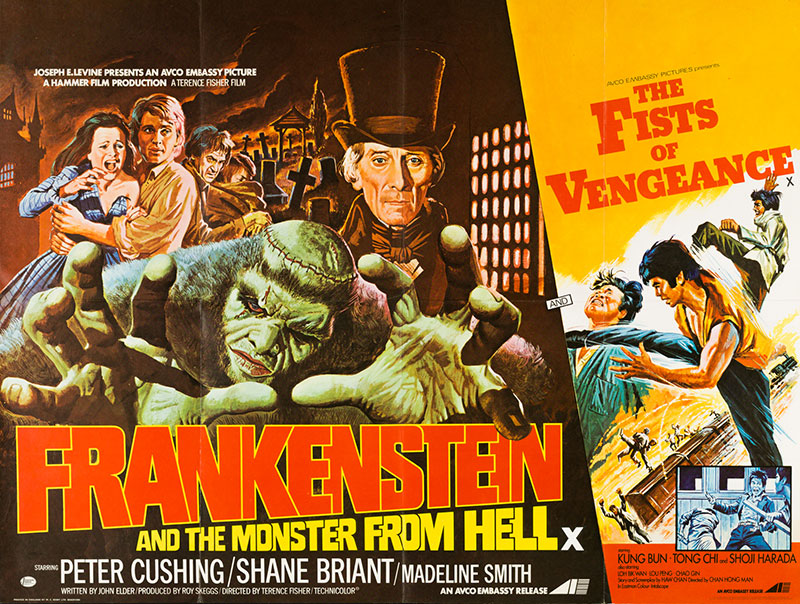 Lisa and the Devil, the 1973 film from Italian auteur Mario Bava, has become one of his more renowned films in the last couple of decades. I first saw it around twenty years ago with a roommate who was watching it for her film class at NYU. Upon release, though, it was a butchered product, with a framing story shot and added after Bava delivered his cut. Of this film, which had been released under the title of La Casa dell’esorcismo (House of Exorcism), Bava said, “La casa dell’esorcismo is not my film, even though it bears my signature. It is the same situation, too long to explain, of a cuckolded father who finds himself with a child that is not his own, and with his name, and cannot do anything about it.”
Lisa and the Devil, the 1973 film from Italian auteur Mario Bava, has become one of his more renowned films in the last couple of decades. I first saw it around twenty years ago with a roommate who was watching it for her film class at NYU. Upon release, though, it was a butchered product, with a framing story shot and added after Bava delivered his cut. Of this film, which had been released under the title of La Casa dell’esorcismo (House of Exorcism), Bava said, “La casa dell’esorcismo is not my film, even though it bears my signature. It is the same situation, too long to explain, of a cuckolded father who finds himself with a child that is not his own, and with his name, and cannot do anything about it.”
That’s some pretty strong language. But, he wasn’t referring to the film that was eventually released as Lisa and the Devil. He was referring to a cobbled-together mess insisted upon by the film’s producer, Alfredo Leone, who wanted a whole bunch of exorcism-related material added to an already completed film in order to cash in on William Friedkin’s Exorcist. This year’s Horrorshow is not concerned with that movie.
Lisa and the Devil follows Elke Sommer as Lisa, a tourist who gets lost in the wandering, narrow streets of old Toledo, Spain. She hitches a ride from a rich, married couple, Francis and Sohpia Lehar (Eduardo Fajardo and Sylva Koscina), and their chauffeur, George (Gabriele Tinti). The Lehar’s old limo breaks down in front of a villa, and they are invited in by the Countess (Alida Valli) and her son, Max (Alessio Orano). In a bit of stunt casting, the Countess’s butler, Leandro, is played by Telly Savalas. Continue reading “Lo spettacolo dell'orrore italiano: Lisa and the Devil”

 Pacemaker Pictures, the English-language distributors of Terror-Creatures from the Grave, the 1965 Italian gothic horror flick, sure went all in on the title. Perhaps they had a shortlist and couldn’t decide between Terror from the Grave and Creatures from the Grave so, like some parents, decided to burden their charge with a hyphenated name. It’s a mouthful, but has loads of kitsch to it.
Pacemaker Pictures, the English-language distributors of Terror-Creatures from the Grave, the 1965 Italian gothic horror flick, sure went all in on the title. Perhaps they had a shortlist and couldn’t decide between Terror from the Grave and Creatures from the Grave so, like some parents, decided to burden their charge with a hyphenated name. It’s a mouthful, but has loads of kitsch to it. By 1974, gothic horror films were falling out of fashion. The year saw the last gasps from the major franchises of Hammer Film Productions, with the releases of Frankenstein and the Monster from Hell and The Legend of the 7 Golden Vampires. The genre had come a long way, but by the time this film, The House of the Seven Corpses, was released, seriously bloody slasher horror was making its presence felt. If a filmmaker was going to do gothic horror, it needed to have a twist.
By 1974, gothic horror films were falling out of fashion. The year saw the last gasps from the major franchises of Hammer Film Productions, with the releases of Frankenstein and the Monster from Hell and The Legend of the 7 Golden Vampires. The genre had come a long way, but by the time this film, The House of the Seven Corpses, was released, seriously bloody slasher horror was making its presence felt. If a filmmaker was going to do gothic horror, it needed to have a twist. This is somewhat of a melancholy review for Missile Test. Not only is this the last film of this year’s Horrorshow to be directed by Terence Fisher, it is also the last film he directed, period. He directed films for a quarter of a century, sometimes putting out three or four in a year. Before I began this Horrorshow, I had never heard of Terence Fisher, but what I discovered was a workaday director who could be counted on to helm a film with care, attention to detail, and strong pace. He was in no way innovative, and his films display the difference between craft and art. Terence Fisher was a craftsman, and his trade was directing movies to make his producers money. He was very good at that, and he was very good at keeping me entertained.
This is somewhat of a melancholy review for Missile Test. Not only is this the last film of this year’s Horrorshow to be directed by Terence Fisher, it is also the last film he directed, period. He directed films for a quarter of a century, sometimes putting out three or four in a year. Before I began this Horrorshow, I had never heard of Terence Fisher, but what I discovered was a workaday director who could be counted on to helm a film with care, attention to detail, and strong pace. He was in no way innovative, and his films display the difference between craft and art. Terence Fisher was a craftsman, and his trade was directing movies to make his producers money. He was very good at that, and he was very good at keeping me entertained.